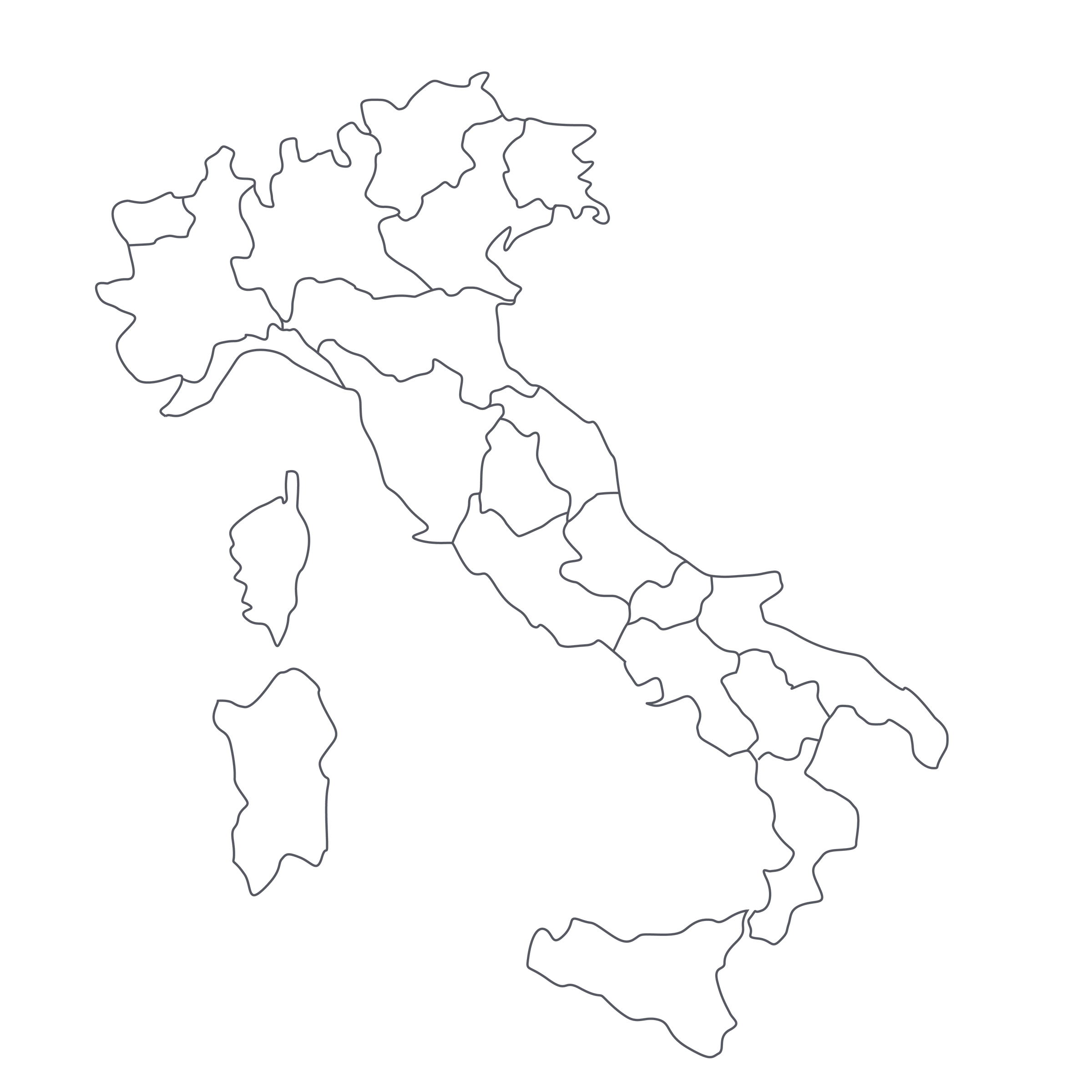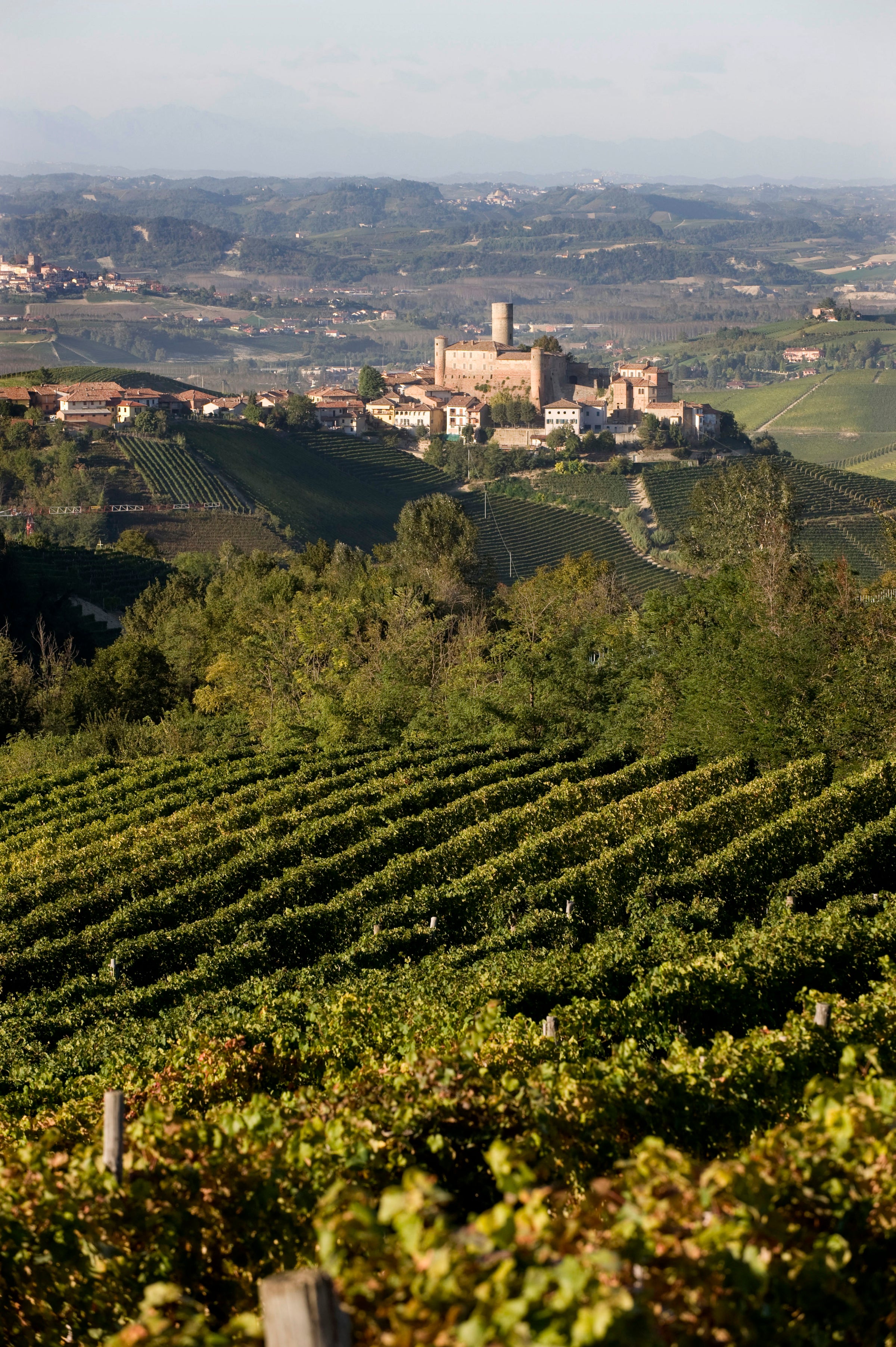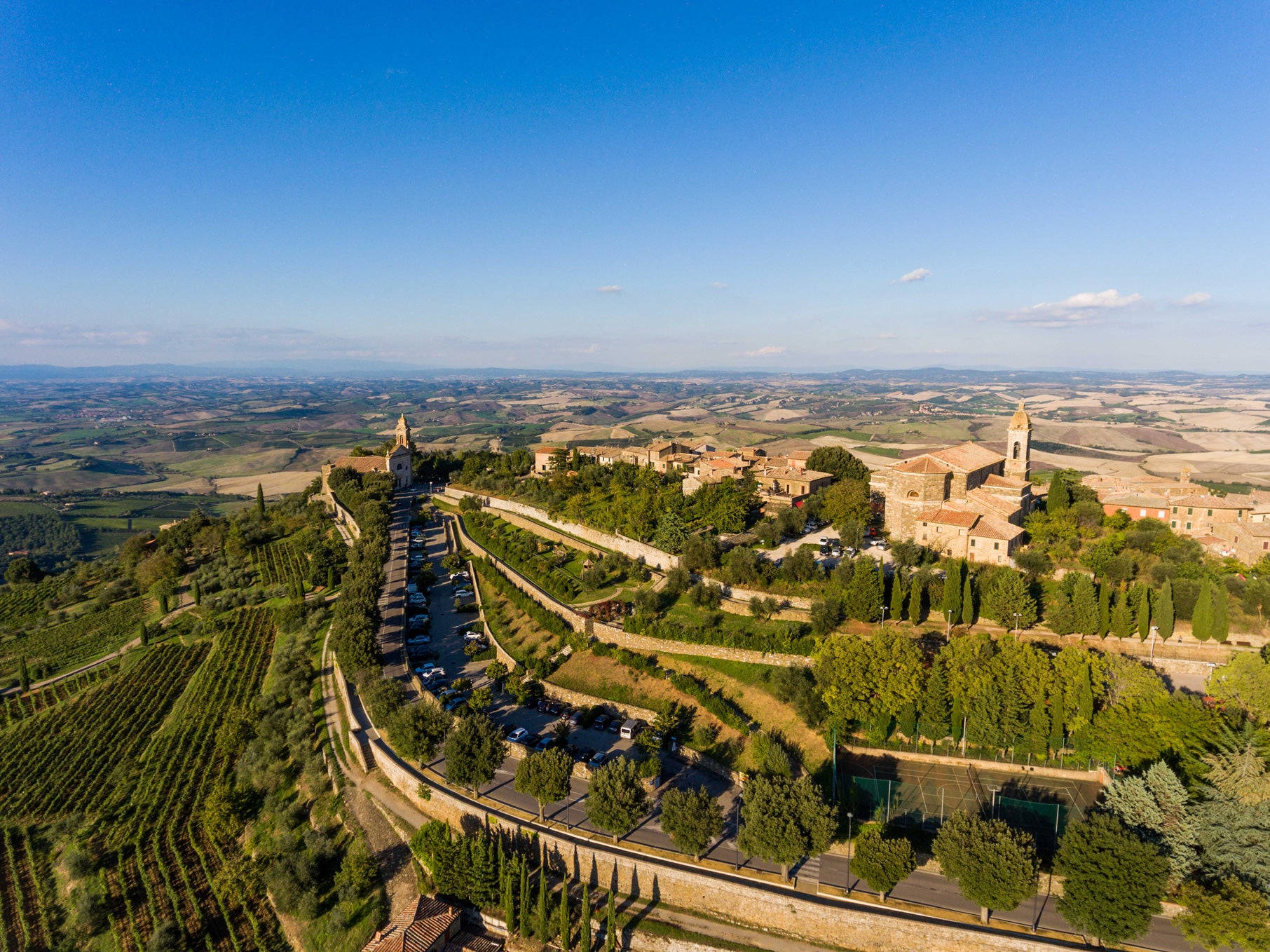It’s impossible not to be seduced by “extreme” wines like this one, which comes from some of the highest-elevation vineyards in Europe and is crafted from a variety called Prié Blanc, which is almost exclusively grown in Italy’s remote Aosta Valley. No matter what side of Mont Blanc you’re on these days—the Swiss Valais, France’s Savoie, or Italy’s Valle d’Aosta—delicious and invigorating white wines abound. For those who crave mouth-watering acidity and palpable minerality in their whites à la old-school Chablis, growing zones like the Valle d’Aosta are no longer new frontiers but well-trod ground.
Maybe, at one time, the area around the towns of Morgex and La Salle, where vineyards regularly climb past 1,000 meters in altitude, would have been considered a “marginal” terroir. But no more. Here in western-most Valle d’Aosta, on the climb up the eastern slopes of Mont Blanc, is where Alpine white wine dreams come true—and the foremost interpreter of the DOC white known as Blanc de Morgex et de La Salle is Ermes Pavese. This is some rarefied mountain air we’re breathing today—think Chablis-meets-Grüner Veltliner-meets Jacquère or, to put it less pretentiously, think mineral and mouth watering and delicious. This wine may rise to dizzying heights, but don’t be afraid, the view is breathtaking.
And, to reiterate, the growing zone delineated by the “Blanc de Morgex et de La Salle” DOC designation is both remote—effectively the last stop before the tunnel that bores through the base of Mont Blanc and connects Italy to France—and tiny. There are only about 25 hectares in the entire appellation (of which Ermes Pavese farms about six), and perhaps a half-dozen commercially viable producers of wine bearing the designation. These vineyards, as noted, are among the highest in Europe, situated on high terraces above the Dora Baltea River, the principal waterway of the Aosta Valley. All the wine appellations of the Aosta Valley are strung along the Dora Baltea (mostly on its north bank, to maximize sun exposure), which runs down into neighboring Piedmont and eventually hooks up with the Pò. Vineyard soils, especially in Morgex and La Salle, are a sandy glacial moraine, infusing the wines with palpable minerality.
The wine culture of Valle d’Aosta (Vallée d’Aoste in French), is a melding of French, Italian, and Swiss wine traditions. French (and a local patois that skews heavily French) is the main language here, and as such the labels on bottles can get confusing—typically you’ll see both Italian and French used simultaneously, much as it is on street signs, etc. in the region. And while there’s ample water in the form of mountain runoff (surging through Roman-era aqueducts that slice through the hills), Mont Blanc provides a “rain shadow” effect not unlike the one Alsace sees from its nearby Vosges range. Summers up here are drier and warmer than you might expect, although the diurnal swings—daytime heat spikes followed by cool nights—are wide.
Ermes Pavese, the grower and winemaker at this small family farm (they also own various livestock and even make their own potato chips), does all the farming and cellar work with the assistance of his family. His ungrafted vines, interspersed between home vegetable gardens, are tiny hand-farmed parcels rooted in a patchwork of stone terraces dating back to the 1600s. And they’re all perched at jaw-dropping elevations between 800 and 1,000+ meters. The only grape Ermes works with—and the only variety permitted in the Blanc de Morgex et de La Salle DOC—is Prié (pronounced “pree-AY”). Grapes are harvested in late fall and juice is pressed into stainless steel tanks where it ferments and rests underneath Ermes’ house. Following 12 months of maturation and a consistent lees-stirring regimen, the wine is bottled.
This 2021 is another triumph—an “Alpine” white through and through, redolent of a mountain meadow criss-crossed by streams and strewn with rocks. It displays a brilliant straw-yellow core with platinum reflections. The medium-bodied palate provides electric, bristling flavors of lime blossom, lemon peel, underripe mango peel, honeydew, lees, acacia, wet stone, and alpine herbs. The finish is lifted and poised, providing a sizzling trail of rocky minerality and mouth watering citrus. Enjoy now and often, and get excited about the near future: In six months’ time (and beyond), this will really find its full voice. Don’t miss it!






